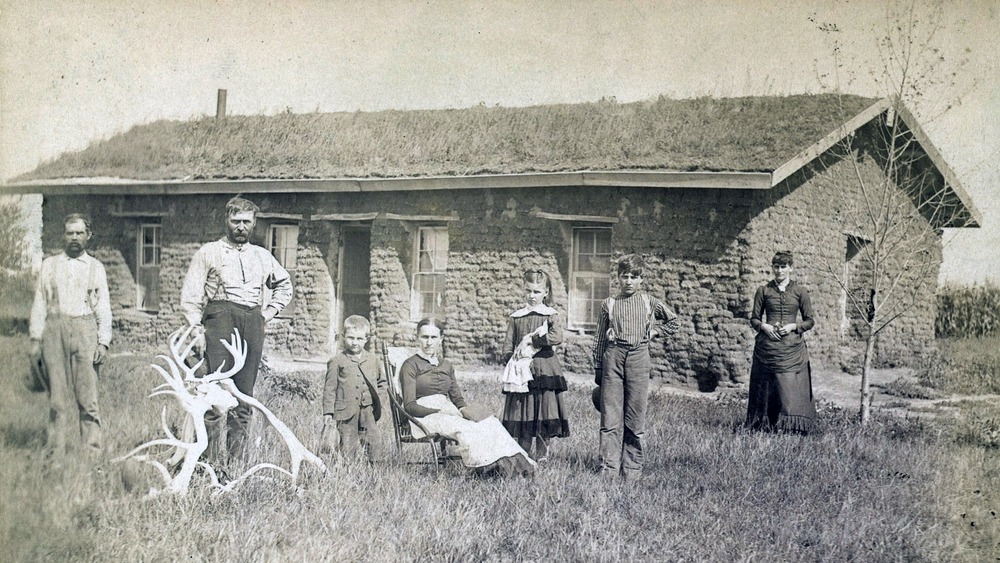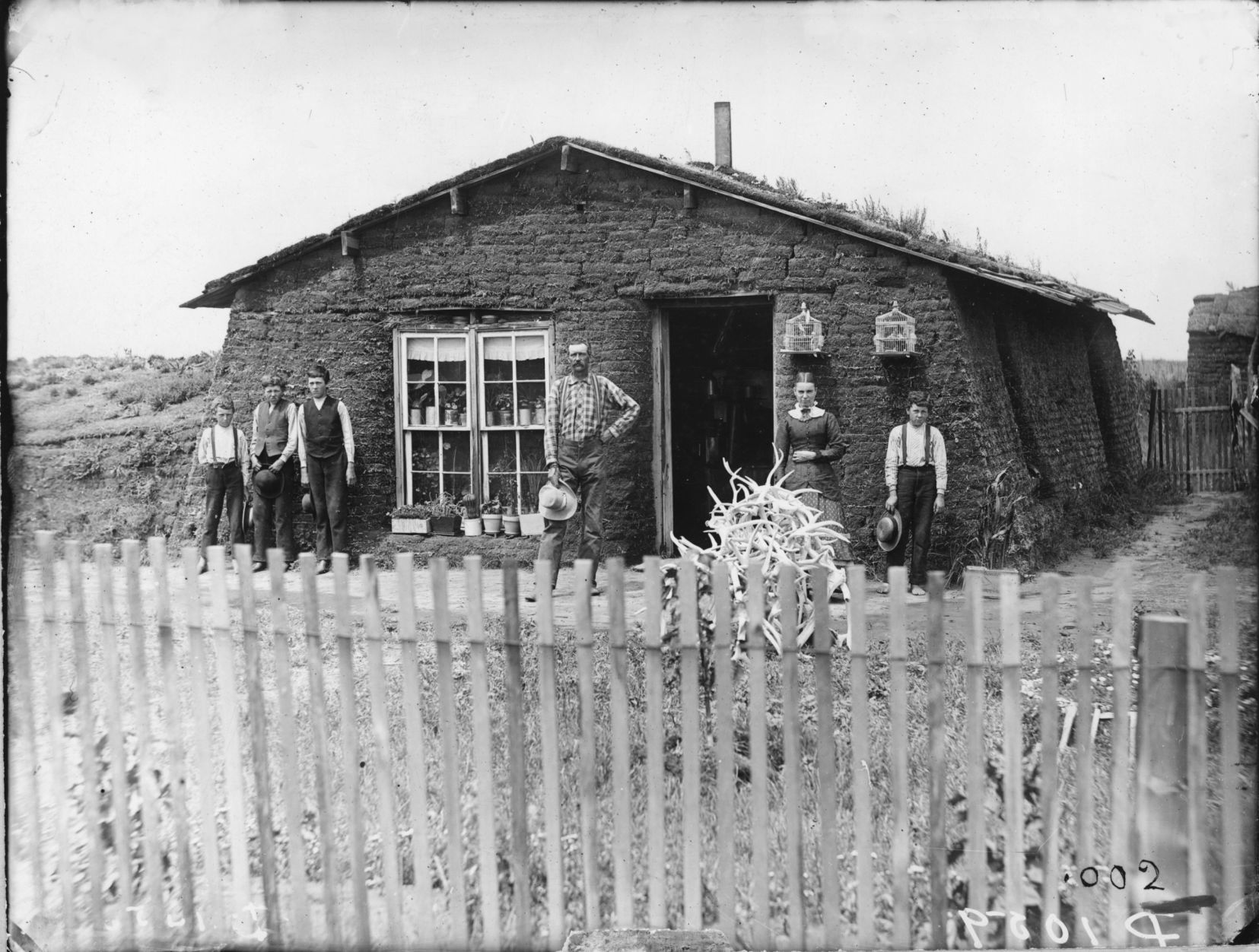Table Of Content

Blocks of sod were extracted first by ploughing long, 30–40 cm wide furrows in dry sloughs. Sod blocks were held together by overlapping, and by their long, fibrous grass roots. Placed grass-side down, these blocks of sod were used as bricks that produced thick, tight walls. For the roof, boards or light poplar poles were usually covered with sod, but sometimes they might be covered with hay or straw thatch. Techniques varied, depending on materials available or local peculiarities. Most homesteaders cut bricks that were 18 inches wide by 24 inches long and weighed around 50 pounds each.
Building a sod house – Cut the sod bricks
Since Conestoga wagons and tents were useless in the fight against the cold and they couldn’t provide enough heat, they had to rely on dugouts. A dugout was basically a cave dug out of the ground or into the side of a low hill at the sod house site. However, they didn’t put too much effort into building it much bigger since it was just a temporary shelter. These two- to three-foot square, four-inch thick sod bricks were then stacked to form the walls of the sod house. Soddy roofs were constructed by creating a thin layer of interlacing twigs, thin branches, and hay, which were then covered over with another layer of sod. They were fireproof, a distinct advantage in a region where grassfires raged.
Sod Houses
This was crucial in order to get to the town and back for supplies within a day. Seeking for medical aid or lawful help wasn’t easy when you were miles away from the nearest town. You had to make sure it can come in time to save your life.

Building a sod house – Dealing with doors and windows
Farmers in the 1800s used mules, oxen or horses, and special plows equipped with curved steel blades to cut through the tough roots of the sod. The roots were so tough that as the plow cut through the sod a loud tearing sound was created. On the day she and moved into her new sod house, Mattie Oblinger wrote to her family back east. She had only minor complaints about sod house living and seemed excited by her new life.
To build a 16X20-foot house, about 3,000 bricks were required, Our Story added. Homebuilders needed to use the bricks the same day they were created or they would crumble. "Freshly cut sod bricks were laid root-side up in order for the roots to continue to grow into the brick above it. Over time, the bricks in fact grew together to form a very strong wall." A famous and substantial example of Canadian sod houses is the Addison Sod House in Kindersley, Saskatchewan, built between 1909 and 1911. Among other techniques, the walls were built to slope inward, creating a strong structure from about four feet thick at the bottom of the walls to three feet at the top. The structure was designated a National Historic Site by the Historic Sites and Monuments Board in 2004 (see Historic Site).
The Lawn You’ve Always Wanted. Delivered Right to Your Curb.
The door and window frames are open boxes the depth of the walls and were set in place so the walls could be built up around the frames. That being said, you may still have to deal with some legal issues if this is your building material of choice. Soddie (plural soddies) (US, Canada, informal) A house constructed from blocks of sod, once common in the prairies of the United States and Canada.
Life on an Alaskan lakeshore – The Past - The Past
Life on an Alaskan lakeshore – The Past.
Posted: Sun, 19 Nov 2023 08:00:00 GMT [source]
Building the House
3,000-Year-Old Ancient Weavings Uncovered in Alaska - GreekReporter.com - Greek Reporter
3,000-Year-Old Ancient Weavings Uncovered in Alaska - GreekReporter.com.
Posted: Tue, 05 Sep 2023 07:00:00 GMT [source]
To date the group has spent over 200 man-hours building the soddy; a few more hours will be required to finish it up. Watch for activity on the museum grounds as the weather warms, because we welcome you to join in the fun and unique experience of building an authentic sod house. A better roof could be made with sawed lumber, but that increased the cost of the soddy. Lumber roofs had rafters with wood sheathing nailed over the rafters.
Marshal McCully and the Sod House

Choosing the right location for a homestead was very important. Newly arrived settlers, known as "sod busters," looked for land which featured a stream or creek and small rolling hills which served as windbreaks. Easy access to planned railroad lines was also an asset because it made it easier to ship goods and livestock to market.
Our team processes and arranges every delivery by hand to ensure it is delivered on time and ready for installation. Add installation during the checkout process for a seamless new lawn experience. Once the walls were scraped, a layer of mud or plaster was added. It would give the wall a smooth and water-resistant coating. Sometimes, the settlers used to cover the walls with fabrics, canvas or animal skins, especially the area where they slept. The main rule was to always use a light color material to reflect any light that made its way into the sod house.
A family that could afford them might fasten carpets to the dirt floor. In some cases, rough or planed split logs were used for flooring. But only a few could afford the luxury of wide, roughcut planks from the sawmill. Some women protested against the continual war with dirt, bugs, snakes, leaky roofs and poor lighting.
More than half of those who set out to live there didn’t make it past the five years. Every third layer of sod is laid crosswise to tie the inner and outer layers together. Usually, a house can last for about 20 years, serving one generation depending on frost, after which it must undergo repairs. To combat their susceptibility to erosion from rain and wind, turf houses are designed in a manner to keep the heat inside. Sod is a mat of grass with an established root system used to provide immediate vegetation for erosion control.
The houses were naturally cool in the summer and warm in the winter. Effects Of Fire On Adobe Brick IntegrityLaboratories tests proved that adobe bricks have a fire-resistance rating of four hours. A conventional wood-frame constructed wall has a fire rating of one hour.
There are a variety of designs, including a type built by Mennonites in Prussia, Russia, and Canada called a semlin,[4] and a variety in Alaska known as a barabara. Sod houses were cheaply built out of available sod, which refers to grass and the soil beneath that is held together by the grass’ roots. If the settler accrued any costs in construction, it was for such comforts as windows, hinges and boards for a door.
The thick earthen walls were able to insulate the living space. An important step was to let a gap above the frame so that the bricks could settle over time without putting pressure on the window or door. You can imagine that if they didn’t leave this space, the pressure might have broken the window or jam the door in place. In order to support the sod above the gap, one would use sticks laid crosswise, grass or any other material that would provide good insulation. The last condition for picking a location for the sod house was accessibility.
Although the soddy remains in its original location, a cover now protects it from the elements. Visitors can walk through the furnished sod house and imagine what life was like for Oklahoma’s early settlers. For those who stayed, time and experience often led to more successful crops and eventually to moving out of the soddie and into a frame house. Flowers on the wide windowsills and pets — dogs, cats, and caged birds — made the house feel like a home. Many settlers threw flower seeds up on the roofs that brightened up their dugouts when they bloomed. Motorized tractors weren't commonly available to farmers until the 1910s.


No comments:
Post a Comment